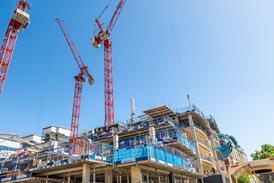- News

All the latest updates on building safety reformRegulations latest
- Focus
- Home
- News
- Focus
- Comment
- Events
- CPD
- Building the Future
- Jobs
- Data
- Subscribe
- Building Boardroom
From the Archives: Queen Elizabeth II opens the Barbican Centre, 1982
By Alex Funk2024-08-09T07:20:00

Source: Loz Pycock / Flickr
Building reported the official opening of the controversial project and wondered what the world would make of it
The Barbican Centre was built on five-and-a-half acres of bomb-damaged ground. It cost the rough equivalent of £500m to complete and London’s expensive postwar gift to the nation experienced a mixed reception.
Construction work began in 1965 and finished 11 years later, forming the final phase of the Barbican Estate, which comprises around 2,000 residences. The centre was inaugurated by Queen Elizabeth II in March 1982. She described it as “one of the wonders of the modern world”.
Already registered? Login here
To continue enjoying Building.co.uk, sign up for free guest access
Existing subscriber? LOGIN
Stay at the forefront of thought leadership with news and analysis from award-winning journalists. Enjoy company features, CEO interviews, architectural reviews, technical project know-how and the latest innovations.
- Limited access to building.co.uk
- Breaking industry news as it happens
- Breaking, daily and weekly e-newsletters
Get your free guest access SIGN UP TODAY

Subscribe now for unlimited access
Subscribe to Building today and you will benefit from:
- Unlimited access to all stories including expert analysis and comment from industry leaders
- Our league tables, cost models and economics data
- Our online archive of over 10,000 articles
- Building magazine digital editions
- Building magazine print editions
- Printed/digital supplements
Subscribe now for unlimited access.
View our subscription options and join our community


















